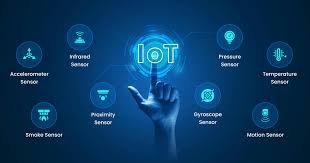IoT Integration: Connecting Devices for Smarter Operations

The Internet of Things (IoT) is revolutionizing industries by connecting devices to the internet, enabling seamless communication, data exchange, and automation. This interconnected network of devices enhances operational efficiency, reduces costs, and improves decision-making. In this blog, we will explore the essentials of IoT integration, its benefits, challenges, applications, and future trends.
Understanding IoT Integration
What is IoT Integration?
IoT integration involves connecting devices, sensors, and systems to the internet, enabling them to communicate and share data. This interconnected network transforms raw data into actionable insights, driving smarter operations.
Key Components of IoT Integration
Devices and Sensors: Collect data from the environment.
Connectivity: Communication protocols and networks like Wi-Fi, Bluetooth, and cellular.
Data Processing and Analytics: Analyzing data to extract meaningful insights.
Cloud and Edge Computing: Providing scalable storage and processing power.
Security and Privacy: Protecting data and ensuring privacy with robust measures.
Benefits of IoT Integration
Enhanced Operational Efficiency
IoT automates tasks and processes, reducing manual intervention and increasing productivity. For example, IoT-enabled machines in manufacturing can self-monitor and schedule maintenance, minimizing downtime.
Improved Decision-Making
IoT devices provide real-time data, enabling informed decision-making. Smart grids, for instance, use IoT data to balance energy supply and demand efficiently.
Cost Savings
Optimizing operations and reducing waste leads to cost savings. Predictive maintenance and smart buildings that manage energy use efficiently are prime examples.
Increased Productivity
Automating repetitive tasks allows employees to focus on higher-value activities, enhancing overall productivity.
Innovation and Competitive Advantage
IoT fosters innovation by enabling new products and services, giving companies a competitive edge.
Applications of IoT Integration
Manufacturing
Predictive Maintenance: Reducing downtime and costs.
Supply Chain Optimization: Real-time tracking of inventory and shipments.
Quality Control: Monitoring production processes for high quality.
Healthcare
Remote Patient Monitoring: Real-time health data transmission.
Smart Medical Devices: Providing alerts and real-time data.
Asset Tracking: Ensuring equipment availability.
Agriculture
Precision Farming: Optimizing irrigation and fertilization.
Livestock Management: Tracking health and location of livestock.
Automated Machinery: Increasing efficiency with drones and autonomous tractors.
Smart Cities
Traffic Management: Optimizing traffic flow and reducing congestion.
Energy Management: Efficient energy usage in buildings.
Waste Management: Improving collection and recycling efficiency.
Retail
Inventory Management: Real-time tracking to reduce stock issues.
Personalized Shopping: Tailored recommendations and offers.
Supply Chain Transparency: Enhancing trust with traceability.
Challenges of IoT Integration
Interoperability
Ensuring compatibility among diverse devices and protocols.
Data Security and Privacy
Implementing robust measures to protect sensitive data.
Scalability
Designing systems to handle increasing data volumes and connections.
Complexity
Requiring expertise across various domains for successful integration.
Cost
High initial setup costs, though long-term benefits often outweigh them.
Future Trends in IoT Integration
5G Connectivity
Faster, more reliable connectivity supporting complex applications.
Artificial Intelligence and Machine Learning
Enhancing data analysis and decision-making.
Edge Computing
Reducing latency by bringing computation closer to data sources.
Blockchain
Improving security and transparency in data transactions.
Increased Adoption of IoT Platforms
Simplifying integration and enabling focus on core operations.
Conclusion
IoT integration is transforming industries, driving efficiency, productivity, and innovation. By addressing challenges like interoperability, security, and scalability, businesses can fully leverage IoT’s potential. Future advancements in 5G, AI, edge computing, and blockchain promise even greater capabilities and applications. Embracing IoT integration can help organizations achieve smarter, more efficient operations and maintain a competitive edge.














